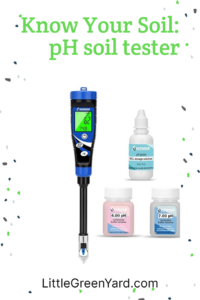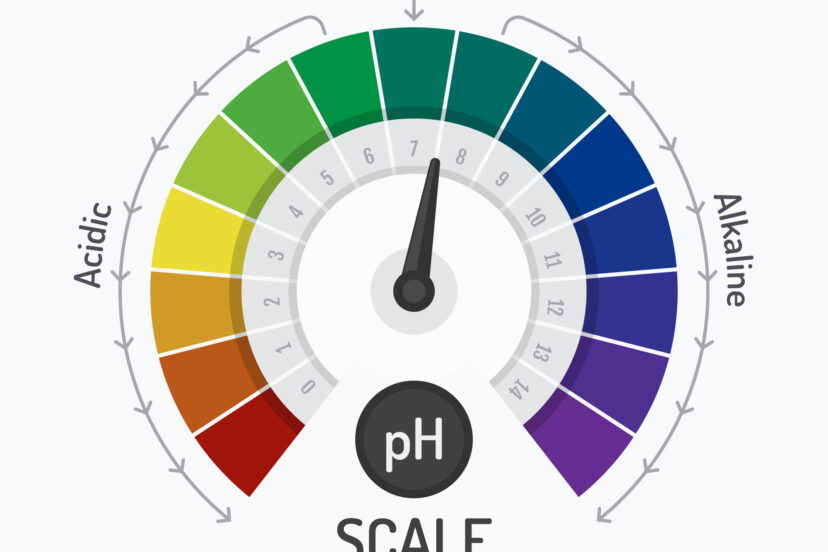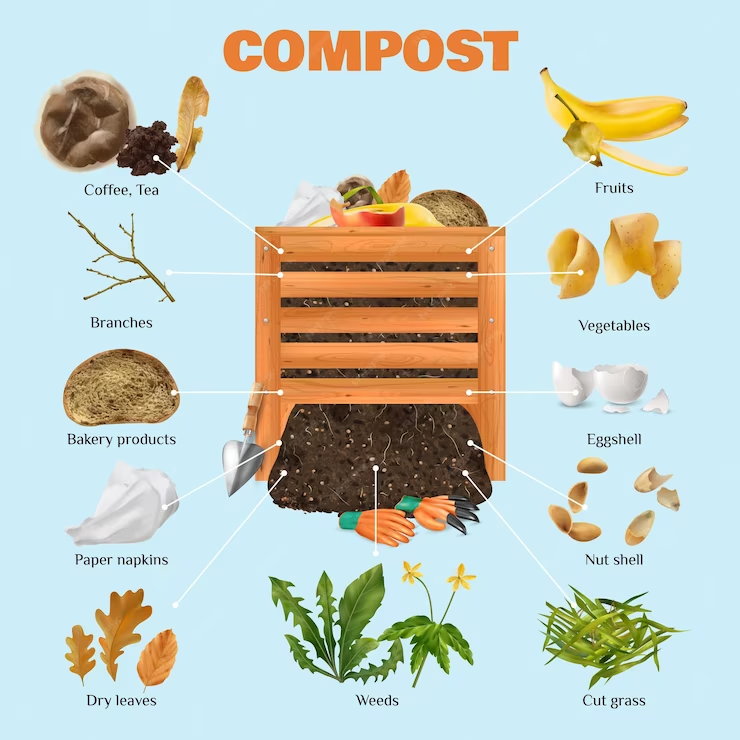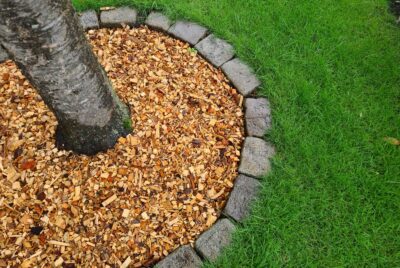Know your soil: pH soil tester
Deprecated: The PSR-0 `Requests_...` class names in the Requests library are deprecated. Switch to the PSR-4 `WpOrg\Requests\...` class names at your earliest convenience. in /home/littlegr/public_html/wp-includes/class-requests.php on line 24
Hey there, fellow gardening enthusiasts! Today, I want to talk about something that’s often overlooked but absolutely essential for a successful garden – knowing your soil type! Whether you’re a seasoned gardener or just starting out, understanding your soil’s pH level is the first step towards cultivating a thriving garden. In this article, we’ll dive deep into the world of pH soil tester, why it matter, and how to make the most out of your gardening experience.
Why Soil pH Matters
The pH level of your soil can have a significant impact on the health and growth of your plants. Soil pH, which stands for “potential of hydrogen,” is a measure of how acidic or alkaline your soil is, and it’s measured on a scale from 0 to 14.
So, why does this matter? Well, because different plants have different preferences when it comes to soil acidity. Some plants thrive in acidic soil (pH below 7), while others prefer alkaline soil (pH above 7). Knowing your soil’s pH allows you to choose the right plants for your garden, or gives you the possibility of altering your soil pH to make your soil a welcoming environment to plant your favorite fruits and flowers!
Optimal Nutrient Availability
One of the key reasons why soil pH is crucial lies in its influence on nutrient availability. Different nutrients that plants require for growth and development are more or less available to them depending on the pH of the soil.
- Acidic Soil (pH below 7): In acidic soil, nutrients like iron, manganese, and aluminum become more accessible to plants. This is why plants that thrive in acidic conditions, such as blueberries and azaleas, can efficiently absorb these nutrients.
- Alkaline Soil (pH above 7): Conversely, alkaline soil makes nutrients like phosphorus and calcium more accessible. Plants that prefer alkaline conditions, like asparagus and lilacs, benefit from this nutrient availability.
Maintaining the right pH level in your soil ensures that your plants have easy access to the essential nutrients they need to grow and flourish.
Healthy Microbial Activity
Beneath the surface of your garden, a bustling ecosystem of microorganisms is hard at work. Soil bacteria, fungi, and other microbes play a vital role in breaking down organic matter, releasing nutrients, and improving soil structure. However, these microorganisms have their own pH preferences.
- Neutral to Slightly Acidic Soil (pH 6 to 7): This range is generally favored by the majority of beneficial soil microorganisms. Maintaining a pH in this zone encourages their activity, which contributes to healthy soil.
- Extreme pH Levels (Very Acidic or Very Alkaline): These conditions can inhibit the growth and function of many beneficial soil organisms, potentially harming your soil’s overall health.
A balanced pH keeps your soil’s microbial community thriving, aiding in nutrient recycling and organic matter decomposition.
Disease Resistance
Soil pH can also impact a plant’s susceptibility to diseases. Some pathogens and pests thrive in specific pH ranges, and by adjusting your soil’s pH, you can create an environment that’s less inviting to them.
For example, clubroot disease, which affects cruciferous vegetables like cabbage and broccoli, is more prevalent in alkaline soils. Adjusting the pH of your soil towards acidity can help reduce the risk of this disease.
The pH Soil Tester: Essential Must-Have
Now that we understand the importance of soil pH, let’s talk about the pH soil tester. This nifty tool is a gardener’s best friend when it comes to determining the pH level of their soil accurately. pH soil testers come in various forms, from simple kits with litmus paper, to handheld probes to digital meters.
What is Litmus Paper?
Litmus paper is a widely available pH indicator made from paper strips treated with a natural water-soluble dye called litmus. This dye changes color in response to the pH level of a solution.
How to Use Litmus Paper for Soil pH Testing:
- Collect Soil Samples: Begin by collecting soil samples from different areas of your garden. Ensure that you have samples from the root zone of your plants.
- Prepare the Soil-Water Suspension: Place a small amount of soil in a clean container and add distilled water. The ratio of soil to water depends on the specific instructions provided with your litmus paper, but a common ratio is one part soil to five parts water. Stir the mixture well to create a soil-water suspension.
- Dip the Litmus Paper: Cut a small piece of litmus paper and dip it into the soil-water suspension. It’s essential to use a paper that is appropriate for the pH range of your soil, as litmus paper comes in both red (acidic) and blue (alkaline) varieties.
- Observe the Color Change: The litmus paper will change color, and this color change corresponds to the pH level of your soil. Compare the color of the paper to the pH color chart that comes with the litmus paper kit to determine the pH value.
Interpreting the Results:
- If the litmus paper turns red, it indicates that your soil is acidic (pH below 7).
- If the litmus paper turns blue, it suggests that your soil is alkaline (pH above 7).
- If the litmus paper remains purple or green, your soil is close to neutral (pH around 7).
Pros of Using Litmus Paper:
- Affordability: Litmus paper is inexpensive and readily available at most gardening or scientific supply stores.
- Quick Results: You can get a pH reading in just a few minutes.
- Ease of Use: It’s a straightforward method that doesn’t require special equipment or training.
Cons of Using Litmus Paper:
- Less Precision: Litmus paper provides a general pH range but may not be as accurate as electronic pH meters.
- Limited Range: Litmus paper is typically suitable for pH values within a certain range, so it may not work well for extreme pH conditions.
- Single-Use: Litmus paper is disposable and provides a one-time measurement.
Direct ground measurement with digital pH soil tester:
- Prepare soil area for testing: Dig and discard the top 5cm of topsoil. Make sure there are no rocks and stones present. If the soil is compacted, loosen the soil using a shovel or auger. This ensures that the soil is loose enough for the probe to be inserted easily. If the soil is dry, add a little distilled water into the pit.
- Insert soil probe: Rinse your soil probe with tap water, then insert it into the soil pit. Ensure that it is deep enough to be at the root zone of your plant. Do not force your probe into the ground. If the soil is still compacted, repeat above step to perforate and loosen soil first.
- pH reading: The digital pH probe will provide a pH reading on its display. This reading is a precise measurement of your soil’s pH level.
Pros of Using a Digital pH Probe for Soil pH Testing:
- Accuracy: Digital pH probes offer high precision, providing pH readings with a high degree of accuracy. This is particularly important for fine-tuning the pH of your soil.
- Wide Range: Digital probes can measure a wide range of pH values, making them suitable for a variety of soil types and conditions.
- Repeatable: Digital probes can be used multiple times and can provide consistent and reliable results over time.
- Data Logging: Some digital pH probes are equipped with data-logging features, allowing you to record and track pH measurements for different areas of your garden.
- Real-time Monitoring: With a digital pH probe, you can monitor pH changes in your soil as they occur, which can be valuable for immediate adjustments.
Cons of Using a Digital pH Probe for Soil pH Testing:
- Cost: Digital pH probes are more expensive than litmus paper or other basic pH testing methods, but they offer superior accuracy.
- Maintenance: Proper care and maintenance of the probe, including regular cleaning and calibration, are necessary to ensure accurate results.
- Electrode Lifespan: The electrode of the digital pH probe has a limited lifespan and may need replacement after a certain number of uses.
Understanding Your Soil’s pH
So, you’ve got your pH reading, but what does it mean? Here’s a breakdown of the pH scale and what different pH levels signify:
- pH 0-6: Acidic soil. Suitable for plants like blueberries, azaleas, and rhododendrons.
- pH 7: Neutral soil. Many vegetables and herbs thrive in this range.
- pH 8-14: Alkaline soil. Perfect for plants like lilacs, asparagus, and lavender.
With this knowledge, you can now make informed decisions about what to plant in your garden or how to adjust your soil’s pH to cater to specific plants.
Adjusting Your Soil’s pH
If your soil’s pH doesn’t align with the plants you want to grow, don’t worry – there are ways to adjust it.
- For Acidic Soil:
- Add lime to increase pH.
- Incorporate organic matter like compost.
- Avoid using sulfur-based fertilizers.
- For Alkaline Soil:
- Add sulfur to decrease pH.
- Use acidic mulches like pine needles.
- Avoid adding lime or wood ash.
Remember, it’s essential to retest your soil periodically to ensure your efforts are paying off.
Our recommendations for pH soil meters
In the world of gardening, knowing your soil is like understanding the language of plants. The pH soil tester is your key to unlocking this knowledge, enabling you to create an environment where your plants can thrive. So, embrace your inner soil scientist and get to know your garden’s pH. It’s a small step with a huge impact on your gardening success.
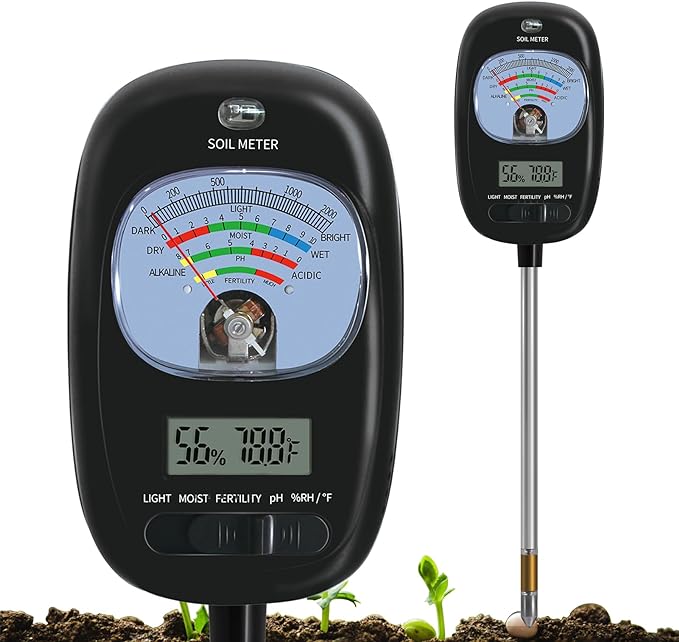
Micger 7-in-1 Soil Test Kit, Soil Moisture Meter/PH Meter/Sunlight Intensity/Fertility Soil Tester, LCD Display Air & Soil Hygrometer Temperature for Garden, Farm, Lawn Care Moisture Meter for Hous Plants
There aren’t any batteries involve, so stick it into the soil and read off the readings directly. I appreciate the user-friendly design of this soil testing kit. It’s lightweight, easy to hold, and the probe is long enough to reach the desired depth. It’ll definitely be a pleasure for you to use this tool for your gardening needs!
Hemdre 4-in-1 Soil Moisture Meter ,Digital Plant Temperature/Soil Moisture/PH Meter/Sunlight Intensity/Environment Humidity Backlight LCD display Soil Test Meter for Gardening, Farming,and Outdoor Plants
This thing is awesome because of the lit LED display! Shows the temperature of the soil, how much light the plant is receiving and the pH of the soil. I feel like this is going to help with growing my plants a lot more efficiently without the guesswork.

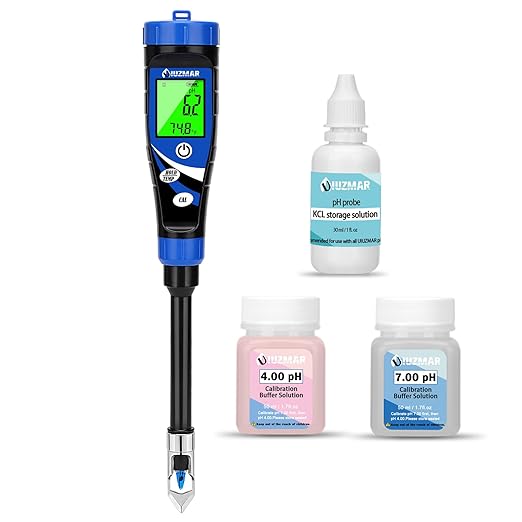
UIUZMAR Soil pH Meter Digital Soil pH Tester for House Plant Soil pH Measure for Coco Soil and Nutrient Solution Lawn Soil Test Kit for Garden, Indoor Greenhouse, Farming, and Outdoor Plants
Finally, an affordable option to test the pH of soil other than strip tests! As far as I can tell, it’s accurate enough for most gardeners’ purposes. I used it directly after a lab soil test and it came up within 0.2 of the lab test. Rigid enough for any potting soil. When using it in the ground some care and common sense is required or I imagine you could break the stem. With that said, it’s much easier to break the standard 3 way probes sold at any box store. Very happy with it!
YINMIK Digital Soil pH Meter for Gardeners, Soil Direct pH Tester for Plant Care, Measure pH of Solution Potting Soil Growing Media,Great for Indoor,Greenhouse,Outdoor,Garden, Lawn, Farming, Yard Use
When I ordered this, I thought it was a simple, “stick it in the soil and get a reading” type of tester- but it’s not. There are various packets of reagents and a hefty user manual. While I’m sure I can learn how to use it, I just haven’t had the time to invest in this. This is not a one-step tester may help some shoppers make a decision on this item.
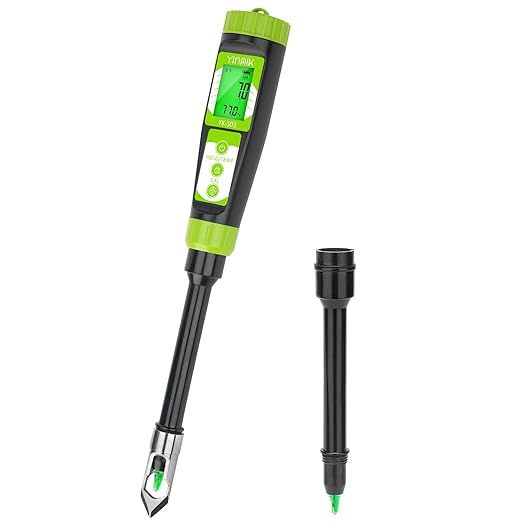
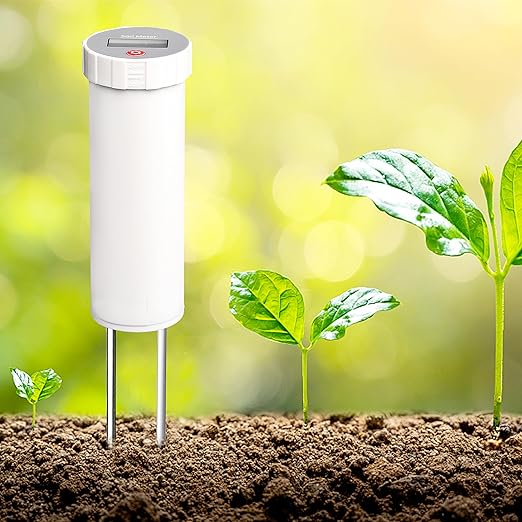
LUVCOSY Digital Soil pH Meter, Industrial Grade Soil pH Tester with Calibration-Free LCD Display, High Accuracy Soil pH Pen, Soil pH Monitor for Garden, Lawn, Plant (White)
The product is easy and simple to use. It comes in this neat small box in order, instructions are very clear and easy to understand. I think the amount for the price was great. They definitely worked and I was able to calibrate all devices.
Bonus Mention:
Powered By Soilkit Soil Test Kit – Discover Your Lawn and Garden Fertility with PH, Nutrient and Mineral Analysis. Professional Results Provide Custom Fertilizer Prescription for Your Yard, Without Trowel, Twin Pack
It was easy to collect the soil sample and mail it off. There were well written instructions. I am looking forward to get a scientific soil analysis for the first time! If you’re like me and have been guessing what your fertilizer needs were, now you’ll know better!

FAQs
- How often should I test my soil’s pH?
- It’s a good practice to test your soil’s pH at least once a year. However, if you’re making significant changes to your garden or growing different plants, testing more frequently is advisable.
- Can I use a DIY soil pH test at home?
- While DIY tests can give you a rough idea of your soil’s pH, they are often less accurate than pH soil testers designed for gardening. For precise results, investing in a quality pH tester is the way to go.
- Are there pH testers for specific plant types?
- pH testers are generally universal, but some models may have features tailored to certain plant types. It’s always a good idea to check the manufacturer’s recommendations.
- Can I use household items to adjust soil pH?
- Yes, you can use items like coffee grounds for acid-loving plants or baking soda for alkaline soil. However, for precise control, consider using specific soil amendments available at garden centers.
- What’s the ideal pH for most garden plants?
- A pH level around 6 to 7 is generally suitable for most garden plants. This falls in the neutral range, making it a good starting point for your garden.
